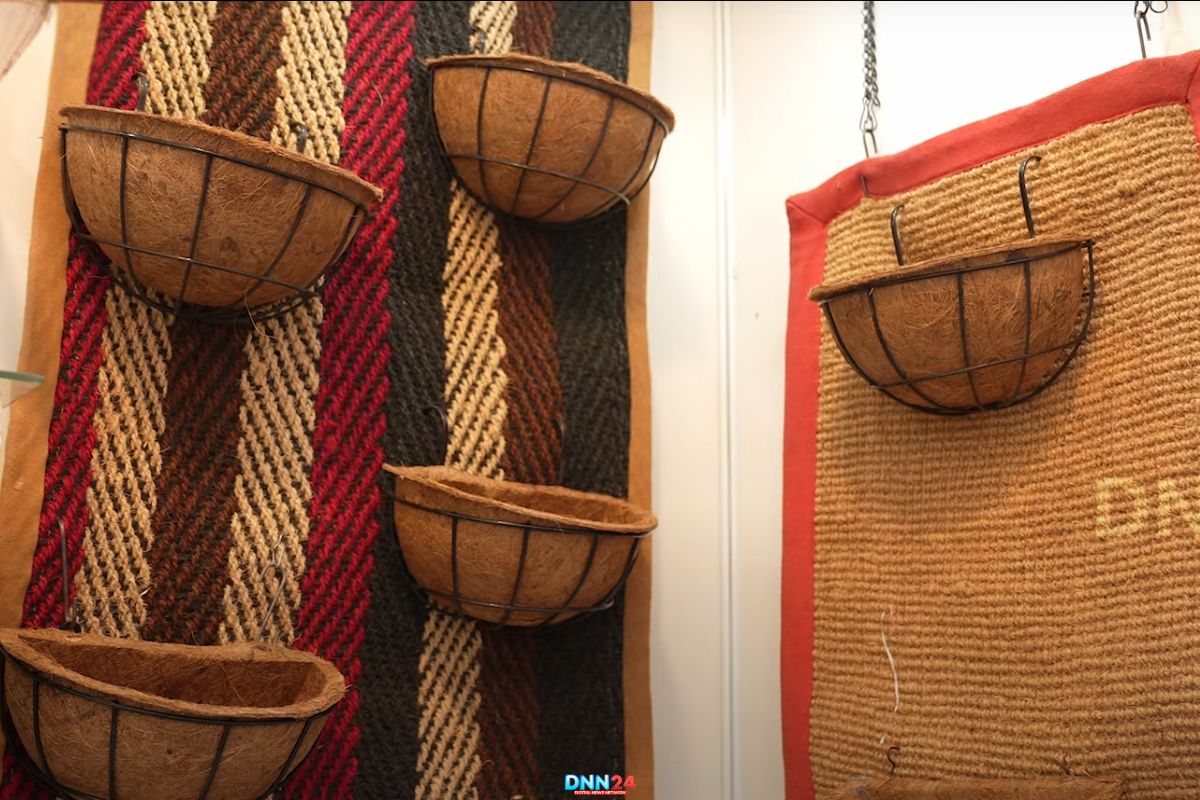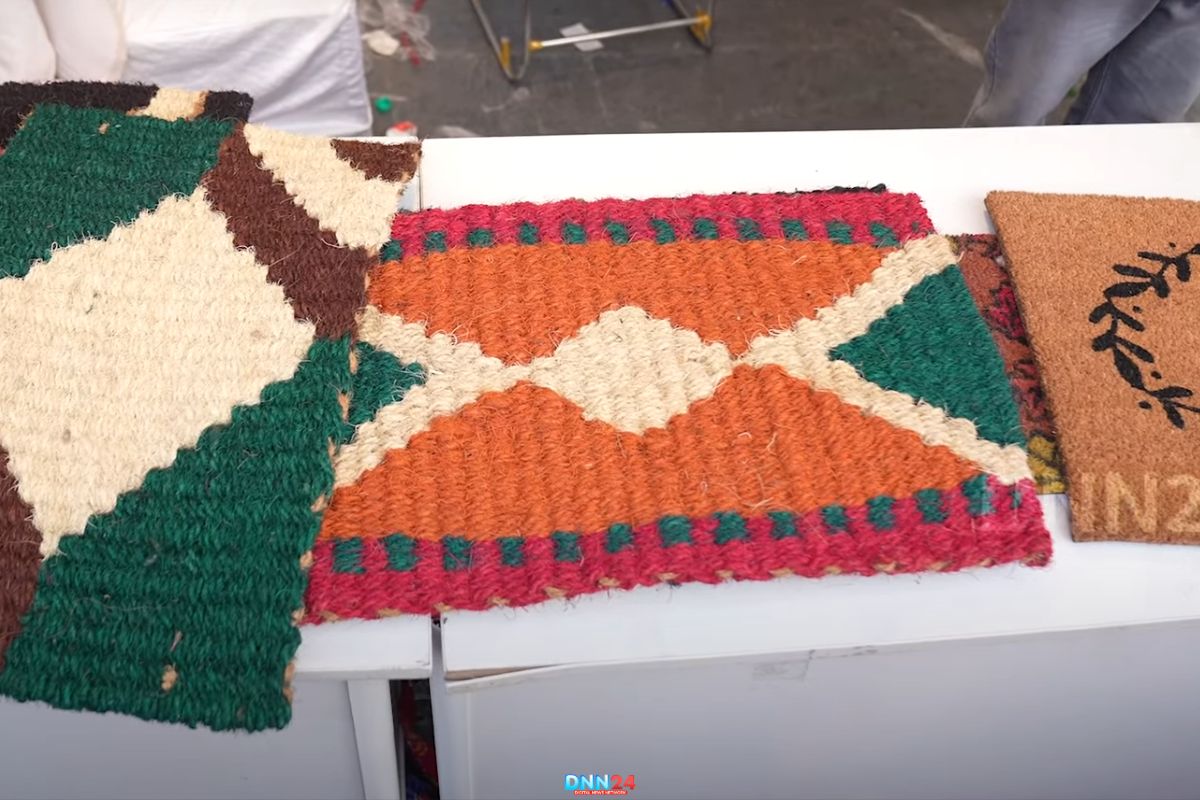In the beautiful coastal state of Kerala, coconut trees grow abundantly and are considered the “tree of life.” The native societies do not waste any part of coconut; they consummate the water and kernel of the coconut together with the tough outer skin and the shell (Coconut Waste). These trees are deeply connected to Kerala’s economy and culture. Among the many people working with coconuts, Kerala artisan Vikram Mishra stands out for his innovative approach. He has developed creative methods to transform coconut waste materials into beautiful decorative products. Instead of allowing these materials to be discarded or burned, Mishra and other skilled craftsmen in Kerala convert them into stunning home decor items.
This is also in line with environmental conservation and offers employment opportunities to the people who are found within the areas. They painted a picture where their work embodies both the time-honored art of craft making and technologically advanced, thus producing classy and environmentally friendly products for the consumers. This paper is focused on describing processes of turning the material perceived as garbage into ornaments and artifacts, analyzing techniques, environmentally-friendly effects, and the social and economic gains of this approach. Through their skilled hands, coconut waste becomes art, showing that sustainability and beauty can indeed go hand in hand.
The Coconut: A Versatile Resource
Kerala’s warm, humid climate creates perfect conditions for coconut trees to flourish. For generations, people living in this region have been using coconuts for preparation of tasty foods, for preparation of oil and other domestic requirements. This indicates that the white part is used for food while the water is for drinking and the oil doubles as food and for lighting and in hair treatment. Nonetheless, once these valuable resources are extracted, residues in the form of husks, shells or fibres are produced. People used to throw this one as garbage or burnt it which has an adverse effect towards the environment and lack of exploiting it to add more value.

Gradually, such material appeared to societY as the unutilized implements of its talented as Vikram Mishra. They saw that the strong fibers, unique textures, and natural aesthetics of coconut waste could become the basis for beautiful decorative items. Through the wastage method these craftsmen were able to see a revolutionary way of responding to environmental degradation by developing items that had market values. Their vision has transformed coconut processing in Kerala, establishing a new paradigm where waste becomes a valuable resource.
Traditional Techniques of Craftsmanship
The skilled artisans of Kerala employ various time-honored techniques to transform coconut waste into beautiful decorative items. These methods have been passed down through many generations, forming an important part of Kerala’s cultural heritage. Vikram Mishra and other craftsmen successfully pass these techniques and transform them in such a way to produce products that could fit in the modern lifestyle.
Coir crafting is the most common of these techniques that are used in the process of making ropes. Coir makers therefore remove the husk of the coconut and transform it into coir that can be used in various applications. This is a time consuming process which is why appropriate skills are needed to deliver the best result. Firstly, they wash the husks with water for several months in order to condition the fibers.

Shell carving is another significant process that has also been incorporated among all the carving. Coconut shells which are hard must undergo the cleaning and preparing processes before artisans design creative carvings on them. These are common shells from the sea, which with the basic tools such as chisels and knives are shaped to form the bowls, lamps, decorative boxes and even the wall arts.
The final process of the work includes painting and decorating the items with natural dyes obtained from plants, flowers and minerals. This helps to make the finished items environmentally friendly all the way from the time they were produced up to the point of usage. Musicians also use natural varnishes based on plant resins to preserve the created works and accentuate their gorgeousness.
Innovative Approaches to Coconut Craft Through Coconut Waste
While Kerala’s artisans deeply respect traditional techniques, they also embrace innovation to create products that appeal to contemporary tastes. It is funny, therefore, that Vikram Mishra is at the forefront of this movement even implementing traditional principles in combination with modern ideas about design. This fusion approach has helped coconut waste products find new markets and appreciation among diverse customers.
Most craftsmen currently mix the coconut materials with others that are natural or recycled in their work. They may use coconut shell pieces to decorate wooden furniture, mix coir with recycled fabric and fabricate new fabrics, coir lamps with metallic inclusions, etc. These hybrid forms retain the green concept factor effectively, along with opening new design opportunities. The contrast between different materials creates visual interest and expands the potential applications for coconut waste products.

Technological changes have also had an impact in production processes within organisations. While some of the artisans apply simple machines in the acceleration of laborious operations for example in coir extraction or primary cutting. This way they can produce more volume without compromising on the quality of their products. Indeed, most craftsmen use the digital design in creating patterns before putting the designs on the coconut artwork. Traditional wooden toys manufacturing is then combined with the introduction of performances that maximize productivity and output to cater for increasing market needs.
Sustainability costs remain as a crucial factor to other alternative learning solutions. Creatives ensure that the environment is taken into consideration during the manufacturing process and other operations. It has been observed that they do not employ chemical glue or synthetic agents to splice together the pieces as seen in production with composite materials. Their workshops are designed with an optimal intake of natural light and air in order to conserve energy.
Socio-Economic Benefits for Local Communities Using Coconut Waste
The coconut waste craft industry creates significant positive impacts on Kerala’s communities beyond environmental protection. It also gives vital income and means of living to many artisans as it did to Vikram Mishra. Most of them are from poor backgrounds and are selected from traditional craftsman backgrounds. These skills make it possible for them to get permanent income from their work and at the same time, they are also able to practice their cultural values. This cottage industry is very suitable for women especially because of the flexible working conditions.
Some of the workshops have employment opportunities especially for the female employees by availing flexible working schedules among other factors. This economy enfranchised women to go to work so as to contribute financially without altering roles as wives or mothers should they not wish to. Poverty has a negative impact on the children through education, housing, and health since their parents or guardians are left with little income to meet these needs of the family hence the income generated ensures that children are educated, have better houses and adequate health care throughout their generations.

it provides employment besides the mere vocational opportunity of carpentry. It assists the roles of coconut collectors, materials processors, quality controllers, packagers, and salespersons of the business. In the process of their expansion, many workshops purchase training education programs to train the young people in specific fields to reduce the level of unemployment in the rural areas. This extensive job generation also assists in creating local employment and also helps to slow down the drifting of people to highly populated urban areas.
Culture is another very important economic social benefit that the company holds as it plays its role of protecting cultural heritage. When products from small Kerala villages reach international markets and receive appreciation, it creates a sense of achievement and recognition. This visibility can attract tourism, creating additional economic opportunities while showcasing Kerala’s sustainable development model to visitors from around the world.
Also Read: Chandrika Srinivas: A Parai Player Breaking Barriers and Preserving Heritage
You can connect with DNN24 on Facebook, Twitter, and Instagram and subscribe to our YouTube channel.

